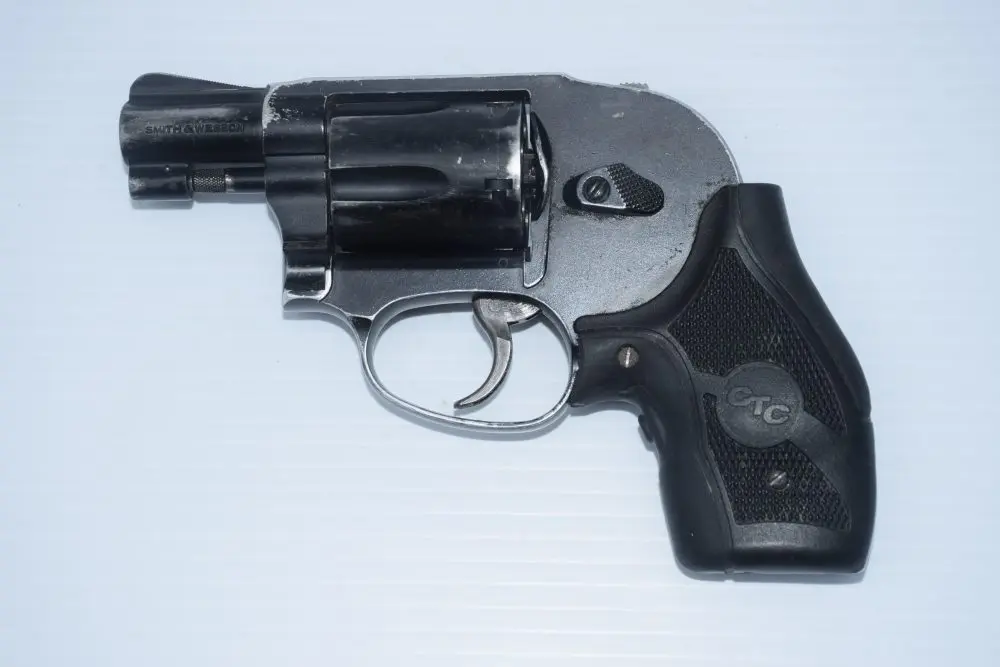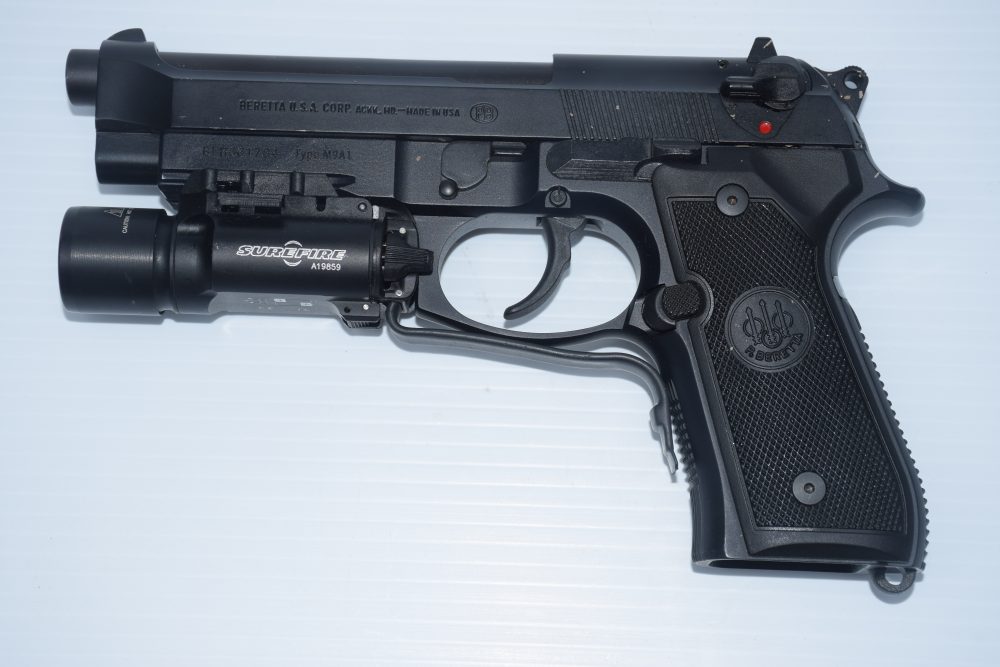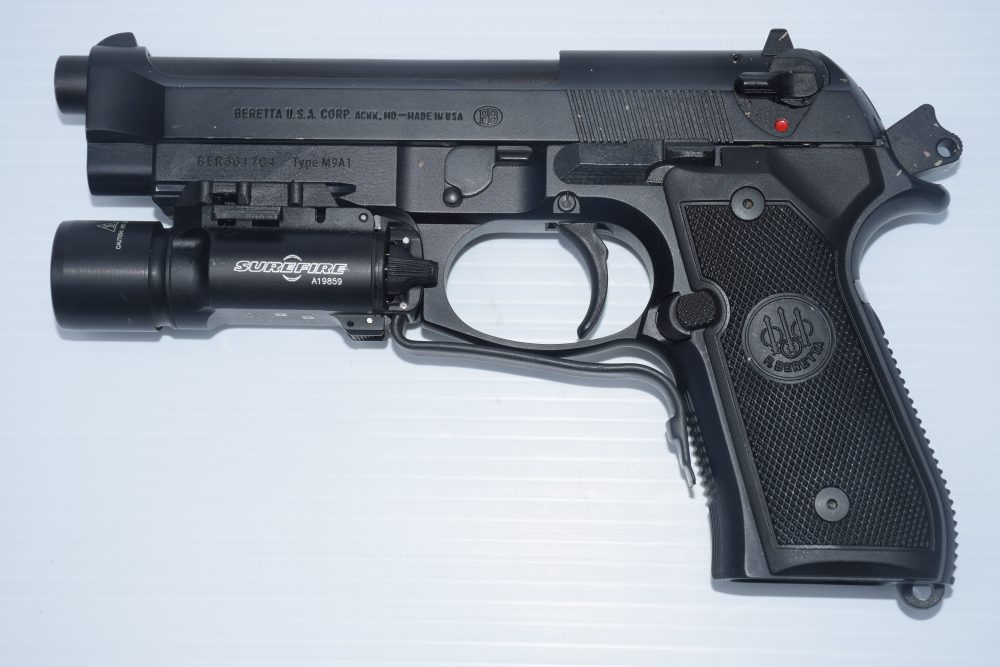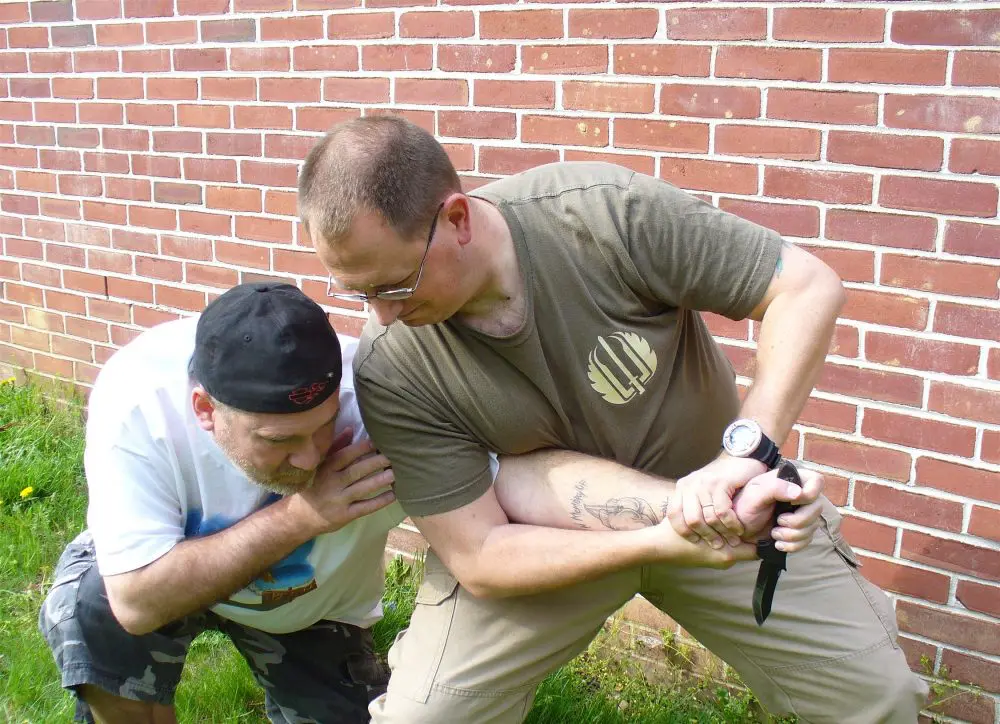Sometimes, it is necessary to sit back and take a long, slow look at the world. And rant.
Let’s qualify some issues. Firearms, of and by themselves, are harmless. They require human interaction in order to function. In order for a human to properly discharge a firearm, it must be loaded with a cartridge. The human must then perform two functions. He must align the sights onto a target (remember, the operative word is properly). And then the biggie: he must control the trigger straight to the rear, without disturbing the lay of the sights.
Simple, right?
But what happens when someone improperly discharges a firearm? This is commonly referred to by the unwashed as an “accidental discharge.” I beg to differ. I understand there may be a time when the stars align, tea leaves are scattered to an east wind, and circumstances may conspire to cause a mechanical failure with a resultant discharge.
However, that should be considered an anomaly, not a regular occurrence. When a firearm is improperly discharged, it is almost always the result of negligence.
Author has carried this M38 S&W as a BUG for over 20 years. When fired in double-action, the trigger reach is long, and the pressure needed to fire it is a tad over 12 pounds.
Hammer is thumb cocked here for single-action. Trigger reach is shorter, and it requires four pounds to fire the gun. Author was trained to fire single-action for precise shots at distance. It was recognized that a smoother trigger would contribute to better hits.
Table of Contents
THE AUTOMOBILE ANALOGY
An analogy would be incidents involving automobiles. Motor vehicles crash into each other—or pedestrians—as if they were moths drawn to a flame. They do it with such regularity that it becomes commonplace, and unless there is a death or serious physical injury, they are often not even investigated. And they are commonly called “accidents,” as if the cause were in fact accidental when they are almost always the result of operator negligence.
Motor vehicles do not crash into each other for no reason. A motor vehicle is an inanimate object. It has no will of its own, and can move only with human interaction. If operated properly, it will get from Point A to Point B without damage or injury—providing that the person operating said motor vehicle acts with due diligence. If one or more operators does something stupid, inappropriate or criminal, damage and injury are possible.
The negligence may be due to inattention, overrunning your headlights, or flat incompetence. Inattention can be distractions such as cell phones or texting, or drowsiness from lack of sleep or fatigue. Overrunning your headlights is a term that covers your overestimation of your ability to handle the vehicle. This is common with younger drivers.
Incompetence has many causes and includes inexperienced drivers. In many cases, it is criminal—excessive speed or impaired driving while using drugs and/or alcohol. Criminal negligence is defined as any type of conduct that “grossly deviates” from normal, reasonable standards of an ordinary person. It generally involves an indifference or disregard for human life or people’s safety.
Both S&W M&P (top) and Glock 19 are popular police weapons. Both have four-pound triggers, and both triggers have a short reach. If you don’t want to fire the gun, keep your finger off the trigger. Advocating a hardware solution to a software problem is the epitome of stupidity.
LET’S GET BACK TO FIREARMS
We said earlier that to properly discharge a firearm was to align the sights on a target and control the trigger without disturbing the lay of the sights. But how about if we do it improperly? How does that occur? Maybe we should first take a long, hard look at why we have the gun in the first place.
No matter if you are a cop, a member of the military, a citizen who carries for self-defense, a competitive shooter or a hunter, you are using the weapon to launch a projectile from here to strike something over there.
It may be nothing more than winning a competition or getting food, or it may be using Deadly Physical Force (DPF) legally against another. Understand that there are differences. If you miss a piece of paper, it may mean nothing more than a lacerated ego. But what if you are lawfully using the weapon against another, and you miss?
Rogers carried this M10 Service Revolver for most of his 20 years on NYPD. DA trigger weight is a very smooth and clean 12 pounds.
SA trigger weight is four pounds.
The projectile you fired and did not strike your opponent has to go someplace, and that may be into the body of someone uninvolved. Or that miss gives your opponent the opportunity to place a projectile or three into your body. Neither of these is a good thing.
We should be performing every task with maximum efficiency. To be sloppy or inefficient in any pursuit is stupid. You may get away with it when playing horseshoes or tossing hand grenades, but aspiring to mediocrity is a surefire way to ensure defeat.
How do we maximize efficiency? Pretty simple, actually. The first step is proper training. Not just the qualification course, but true training. This is where most fail, be they police, military, or average earth people. As the late Jeff Cooper said, merely possessing a violin does not make one a musician. This seems to be forgotten by most, who believe having a certain occupation, being a writer or blogger, or being able to properly identify a firearm two times out of three makes them knowledgeable in all aspects of gunfighting.
The second is to understand that the mission drives the gear train. After you determine your mission, you need to find the best equipment available that will lead to mission success. Then seek out the best training. The handgun itself needs to be serviceable—that is, it must be reliable. It must also be ergonomic—it must fit the hand for the majority of users. The sights need to be useful and the trigger manageable. The more manageable the trigger, the more likely a competent shooter will be able to reliably strike the target.
Long triggers are more difficult to use because they may require changing the way you hold the gun, and need more pressure to fire the weapon. Shorter triggers permit a grip that is acceptable for more people, and permit a competent shooter to more likely strike his target, which is the purpose of the gun in the first place. If the gun is unmanageable, the sights poor or the trigger hard to control, you will have great difficulty using it.
DA trigger pull on author’s M9A1 is a very long 12.5 pounds, but he has seen Marines and Soldiers manage to have negligent discharges in this mode, just as cops ND their revolvers.
SA trigger pull is a short and very manageable four pounds.
HANDGUN ACTION TYPES
There are two types of handguns in use—the revolver and the semiautomatic pistol. Though revolvers are now an anomaly as a police service gun, they are still in use as back-up guns. They may be double-action-only (DAO) or double-action/single-action (DA/SA).
Semiauto handguns have several action types. They may be single-action, as exemplified by the M1911A1, or they may be single action/double action, such as the Beretta M9 and SIG 226. This was very common for police work. Some agencies (NYPD, for example) had double-action-only guns. Striker-fired are the most common police guns today, with the majority from Glock and Smith & Wesson.
A few words about trigger weight. Clearly the force necessary to bring the trigger to the rear has to be manageable. If it is not, the projectile discharged from the weapon will likely miss the intended target. Consider that a pistol may weigh about 2.5 pounds. The trigger may need between four and 14 pounds of pressure to fire the gun. See the problem?
But it’s not just about weight. The mechanical aspects of the trigger are also in play. The length of the trigger press, as well as how “clean” the trigger is (think smoothly here), also have a lot to do with it. As an example, the Model 10 S&W Service Revolver I carried for most of my time in NYPD has a DA trigger pull of 12 pounds. It is clean and very manageable. The Model 38 S&W I carry as a back-up gun also has a 12-pound DA trigger pull, but is less clean and more difficult to manage—no doubt because of the coil spring used in that type of gun.
The revolver could be fired double-action—one long, hard trigger press that cocks the hammer, rotates the cylinder, and drops the hammer as the trigger press is completed. If fired single-action, the shooter manually cocks the hammer. This also rotates the cylinder. The trigger reach is shorter and the pressure required to release the trigger is less. Revolvers do not commonly have a mechanical safety.
A single-action semiauto handgun starts with the hammer cocked and manual safety engaged. The trigger is short, and the amount of pressure required to fire the weapon is generally between 4.5 and eight pounds. It is arguably the best trigger available.
The SA/DA semi-auto is an interesting design in that it requires a long, slow and heavy trigger press for the first shot. Like a DA revolver, the trigger press also cocks the hammer for the first shot. For the second and succeeding shots, the hammer remains cocked and the trigger press is shorter and lighter. This means that one grip and trigger press are required for the first shot, and a second one for succeeding shots. While it is difficult for many to manage, it can be learned. The DA semi-auto is a consistent long and heavy trigger pull for each shot. While consistent, it consistently sucks.
TRIGGER PULL WEIGHTS
The most common semi-auto handguns in use by police in the United States are striker-fired. Below are the weights of trigger pull from guns in my armory. All values are approximate.
- BCM 1911: 4 pounds, 5 ounces
- G19: 5 pounds, 9 ounces
- G19 NYPD: 12 pounds
- S&W M&P 9: 4 pounds
- S&W M38: DA 12 pounds, 2 ounces; SA 3 pounds, 8 ounces
- S&W M10: DA 12 pounds; SA 4 pounds, 1 ounce
Much has been made of increasing the weight necessary to function the Glock trigger. Back in the day, when dinosaurs ruled the earth, a State Police Organization wanted heavier triggers to prevent what they called accidental discharges. A while later, a County PD wanted to make it even heavier and drove the weight up to 12 pounds. A short time later, the largest PD in the country adopted that heavy trigger for the Glocks and DAO semi-auto pistols. The net result was a trigger that is difficult to manage, defeating the purpose of the gun.
But wait, if only the Glock trigger were longer, we wouldn’t have negligent discharges!
Nonsense! At EAG Tactical, our revolvers have long triggers and heavy pulls, and yet people ND those guns like it was expected of them. It is not about the distance the trigger has to be pulled, and it is not about the weight. I have been doing this since 1963 and have seen a fair number of negligent discharges. Not surprisingly, most of them have been with DA/SA revolvers and DA/SA pistols.
Two very competent Gaithersburg, Maryland cops, Willy Delgado and John Leache, understand the consequences of poor training and sloppy gun handling. Their carbines have a trigger pull of approximately six pounds with a short pull. They keep their trigger fingers straight and outside the trigger guard until the sights are on target and they are ready to shoot.
FOUR SAFETY RULES
To help folks better understand—and to ensure they are proficient gun handlers—there are four safety rules to help them along.
- All guns are always loaded.
- Don’t let the muzzle cover anything you are not willing to destroy.
- Trigger finger remains straight and outside the trigger guard until your sights are on target and you are ready to shoot.
- Be sure of your target. Consider the background. Consider what is between you and the target.
Straightforward, and these rules have been around for many years. If you follow all four, you will not have a negligent discharge, and you’ll keep yourself and others out of trouble.
WHERE ARE WE GOING WITH THIS?
Carrying a loaded firearm brings with it legal, moral and ethical responsibilities. To ignore any of those three can lead to disaster. If you are a normal earth citizen who possess or carries a firearm, those responsibilities rest on you.
If you are employed by someone who requires you to carry a firearm, they also have the responsibility to ensure you have received sufficient training to be able to safely carry the gun and use it properly within the constraints of the law. Sadly, most organizations pay lip service to this and spend their resources on ensuring that people successfully pass a qualification course instead of learning how to fight with a gun.
To compound this tomfoolery, some agencies discourage their people from seeking outside training, stating that “we teach them everything they need to know.” In the context of self-defense—by individuals or those tasked with enforcing the law—generally one is authorized to use DPF when someone is using or attempting to use DPF or force equating to Serious Physical Injury (SPI) against you or a third person. That force needs to be appropriately applied.
In 1976, the New Jersey State Police adopted the HK P7, a squeeze cocker. This required you to squeeze the front strap when you gripped the pistol. After all, you will do this naturally…. Once you squeezed it to the rear—about 10 to 11 pounds worth—the gun was cocked. All that was required was to press the 4.5-pound trigger to the rear. It sounded viable, and it really was a beautiful gun, but the agency had a rash of NDs.
It seems that when people are startled, they clench their fist and all of the fingers. And if the trigger finger happens to be resting on the trigger, an ND will occur. The sympathetic squeeze response has been known for a long time. It wasn’t that the gun was bad, it was that people were not trained as well as they should have been.
Guns are not unsafe. Guns are not dangerous. People who are in possession of a gun determine how and why it is used. And if those people are poorly trained, bad things will happen.
I’ll add a salient point. Shooting pieces of paper on a square range does not equal engaging another human being who is trying to kill you. The basics are the same, but the application of those basics against someone who is hell bent on hurting or killing you adds a dimension that few have experienced.
The key is, always has been, and always will be training.
Pat Rogers is a retired Chief Warrant Officer of Marines and a retired NYPD Sergeant. Pat is the owner of E.A.G. Inc., which provides services to governmental organizations and private citizens. He can be reached at [email protected].













